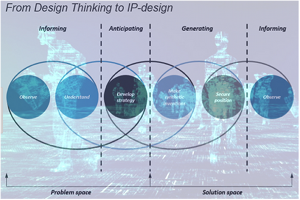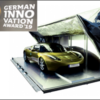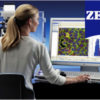MIPLM 2018-19: 5th module on leadership in IP management for the digital era
The 5th module of the MIPLM program is about human resource management (HRM), Leadership and management control systems. Digitization is not a passing phase: it is the next industrial revolution. Now companies require a digitally adapted new kind of leadership and strategy. Digitization has brought about a myriad of growth opportunities as well as unprecedented challenges. For example, it has redefined the boundaries between partners and competitors. In many industries digitization has lowered the barriers to entry, making it easier for newcomers from other industries and with different technologies to compete, often more aggressively and briskly.
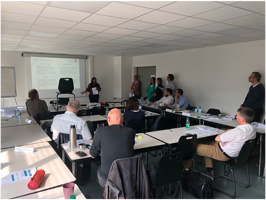 Digitization brings great challenges for leaders of business organizations, who now must deal with disruptive changes on the commercial landscape, with data-driven decision making, as well as with new ways of crowd-based working; and with a workforce with ubiquitous access to information and establishing new ways of communication. In this module, we discussed leaders’ perspectives on these digitization-driven developments. Leaders, as the focus of our analysis, discuss environmental changes of leadership as well as updated practices of leaders’ communication with their followers. In addition, we discussed leaders’ self-reported context-transcendence of their individual leadership styles. The lecture contributed to a more integrative view of the interplay of digitalization and leadership and to the thinking on whether the assumptions of leadership theories of the non-internet era are still valid.
Digitization brings great challenges for leaders of business organizations, who now must deal with disruptive changes on the commercial landscape, with data-driven decision making, as well as with new ways of crowd-based working; and with a workforce with ubiquitous access to information and establishing new ways of communication. In this module, we discussed leaders’ perspectives on these digitization-driven developments. Leaders, as the focus of our analysis, discuss environmental changes of leadership as well as updated practices of leaders’ communication with their followers. In addition, we discussed leaders’ self-reported context-transcendence of their individual leadership styles. The lecture contributed to a more integrative view of the interplay of digitalization and leadership and to the thinking on whether the assumptions of leadership theories of the non-internet era are still valid.
Prior to diving into the implications on HR functions, it is important to identify selected organizational implications of the digital economy: Increasingly, responsibility is sitting closer to where decisions are most effective: Organizations are flatter and decision-making leaner.
- Leaders have always focused on outcomes. With the digital transformation, there are technological enablers that make it possible to measure and test the soundness of decisions quickly and easily.
- Mobility and flexibility are crucial for employees to remain relevant in the digital economy. Accordingly, competencies are transferable and internal and global movements are more appealing to both employers and employees.
 So, the HR dilemma no longer lies solely between cost savings and value added. Instead, HR’s concerns will soon be revolving around the changing nature of the organization and employees becoming increasingly digital and influenced by the following disruptive themes:
So, the HR dilemma no longer lies solely between cost savings and value added. Instead, HR’s concerns will soon be revolving around the changing nature of the organization and employees becoming increasingly digital and influenced by the following disruptive themes:
- Digital mega trends, including but not limited to cyber, data, cloud, social and mobile.
- A multi-generational workforce including Millennials or first-generation digital citizens.
- Merging work and life with hyper- connected employees.
- Emergence of a new set of digitally skilled employees.
- Business models under stress from digital disruption.
The employee being perceived as the first consumer of the employer’s brand. HR needs to be more pre-emptive regarding the digital transformation as it plays an important role in shaping the organization’s digital identity. It is a challenge and really complex to plan the future capabilities of a workforce in the digital economy. This is also true for the ability to integrate the right people into a dynamic organizational context and to help existing employees and leaders gain new digital competencies to be able to drive transformation.
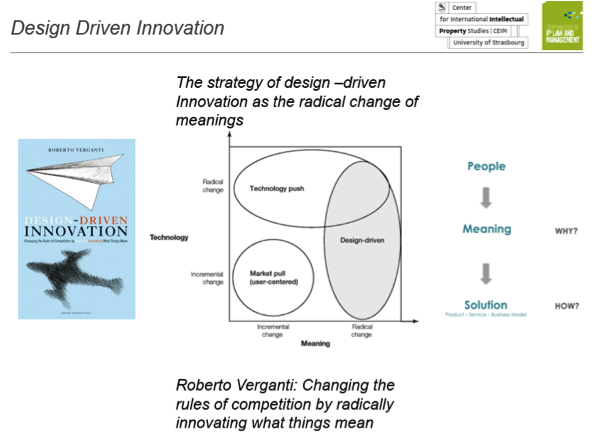 To be successful in the new generation of business ecosystems that is based on innovation, collaboration and digital transformation we need whole-brain skills that fosters creative business leadership and increases the effectiveness of human centered Lean and Design Thinking methodologies:
To be successful in the new generation of business ecosystems that is based on innovation, collaboration and digital transformation we need whole-brain skills that fosters creative business leadership and increases the effectiveness of human centered Lean and Design Thinking methodologies:
– creativity
– thinking out of box
– ideation
– observation
– contextual thinking
– asking good questions
– pattern recognition
– empathy
– emotional intelligence
– inspiration
– concretization
In recent years “Artful Thinking” mindset that is supported by most reputable academic institutions such as Harvard and MIT have become the most distinctive way to develop these whole-brain skills.
In the following movie, John Maeda is explaining the link between design thinking and creative leadership:
John Maeda is an US-American executive and designer. He is amongst other obligations on the Board of Directors of consumer electronics company Sonos.
Case study presentations:
Here you can find the case study Hansgrohe about the usage of IP design for developing and protecting the digital showering experience of RainTunes [Case Study Hansgrohe]. It shows how Hansgrohe uses the Digitization to revolutionize the showering experience. Black Forest based Hansgrohe is for 118 years the household name for fittings, shower heads and showering systems. In 2019 the traditional company moves forward into a new era: Hansgrohe uses the possibilities of the Digitization to make the daily Interactions with water yet more beautiful – with RainTunes.
Human, water, sustainability – these three terms shape the actions of the Hansgrohe Group; still in the digital age. Moved by the question of the meaning of Digitization for the people in the bathroom an interdisciplinary Innovation team developed independently of the daily business new products, which fundamentally change the showering experience of the customers. It was not Digitization for its own sake, but the intention to improve the life quality of each individual customer. The center of the Innovation process was the human being and the question how to improve someone’s life. The goal was to fulfill the individual needs around water with the digital products of the Hansgrohe brand and to sustainably arouse emotions with them. To reach this standard Hansgrohe consequently thinks from the perspective of the individual human being.
The challenge for the Innovation Division was to try new ways and structures in product development and design. They started this mission together with Phoenix Design, a longtime innovation partner of Hansgrohe and leading in their business. At the ISH in March 2019 – the world leading fair for sanitary products, energy and climate technology in Frankfurt – finally Hansgrohe and Phoenix Design reached their first milestone. There they presented to the public two digital solutions of the Hansgrohe “Smart Living World”. The innovative products are individual, realistic and transforming for Hansgrohe and at the same time surprising and inspiring for the customer … and patentable. During the process development different disciplines, processes and working styles came together. To avoid falling into old thought patterns, but creating something novel, Hansgrohe and Phoenix Design created a different and sustainable working environment, where digital ideas can grow and become successful. This led to the creation of the Hansgrohe InnoLab, which is a fertile ground for innovation.
With the new InnoLab Hansgrohe achieved to transform the Innovation Division and set it up for the future. This ability of continuous development and striving for innovation has always been in the DNA of Hansgrohe. Klaus Grohe, till 2008 long-standing CEO of Hansgrohe, led on the tradition of innovation with his inventor spirit and his hand-on mentality and became a role model for todays innovation team. Courage, the right measure of risk taking and a good gut feeling characterize Hansgrohe still today.
Case study presentations:
Task 1:
Agile Innovation Management
Please explain the ideas of design driven innovation and how the change of technology and meaning drives innovation. Please explain what design driven innovation means for innovation in the showering business in the context of the RAINFINITY project. Please explain what the design thinking approach is and how it was implemented in the design process of RAINFINITY.
There are different styles of project management to finish projects efficiently. Please describe the traditional project management and the waterfall approach. Identify the strengths and weaknesses of this approach. Please explain the basic approach of IP-Design used to develop RAINFINITY. Please explain why IP-Design is an agile method.
Here you can follow the presentation to task 1:
Presented by:
- Isabella Ferri, Solvay SA, Bollate, Italy
- Giulia Ubertone, Self-employed lawyer, Monza, Italy
- Neha Goel, Eaton India Innovation Center, Pune, India
- Idoia Apraiz, Galbaian, Mondragon, Spain
- Martin Salzburger, Airbus Defence and Space GmbH, Manching, Germany
Task 2:
Leadership in the Digital Transformation
Please explain why the digital transformation is not a trend, but a revolution and how it forces industries to design their products in a different way. Please explain shortly why IP-design is a leadership tool and what are its general features as a leadership tool. Please explain the main leadership tasks and how they are implemented with the core elements of IP-design. Please explain the 5 concepts of digital leadership and show how they are represented in the IP-design process used in the RAINFINTY project. Please explain the different organizational structures in a company. Please explain what makes project teams different from the other organizational structures. Please explain how a project team in the development process for RAINFINITY looked like. Which groups of people are involved and what are their roles in the IP-design process?
Here you can follow the presentation to task 2:
Presented by:
- Björn Möller, Siemens AG, Munich, Germany
- Andreas Weiland, Maschinenfabrik Rieter AG, Winterthur, Switzerland
- Vincent Chevroton, Faurecia Innenraum Systeme GmbH, Hagenbach, Germany
- Christiane Marti, Novartis Pharma AG, Basel, Switzerland
- Plamena Giorgieva, EUIPO, Alicante, Spain
- Rabia Nurgul Ozbaylanli, Turkish Patent and Trademark Office, Ankara, Turkey
Task 3:
IP-Design
Please explain which customer benefits / added value the digital shower experience provides to the user. Please describe the process of using or generating the digital showering experience. For this purpose, please perform a so-called cognitive walkthrough. Please assign the customer benefits to the corresponding process steps in the cognitive walkthrough. In other words, please show in which process steps the customer benefits are generated. Please show by means of prioritization which process steps in the cognitive walkthrough are the most important for the generation of these customer benefits. Please collect exemplary system components (both digital and physical) that are necessary for the execution of the process step “adapt selected showering scenario”. Please bring the system components into a structure that allows for describing the basic functional relationships between these components. Please describe the given patent type in a nutshell. Then map the functional relationship between the system components described in this patent type to the structure created above. Now use the structure to identify further non-trivial functional relationships between the system components around which IP can be designed. Which system components can be added or omitted compared to the patent type, and which functional relationships arise from this? How can the functional relationships be meaningfully modified?
Here you can follow the presentation to task 3:
Presented by:
- Katsuya Iwazaki, Toyota Motor Corporation Ltd., Aichi, Japan
- Michael Kirklies, KIPAT Patentanwälte, Neu-Ulm, Germany
- James Eilertsen, Heptagon OY, Rueschlikon/Zurich, Switzerland
- Kamran Houshang Pour Islam, IPI, Bern, Switzerland
- Hendrik Promies, Siemens AG, Erlangen, Germany
- Roland Bittner, Siemens AG, Erlangen, Germany

